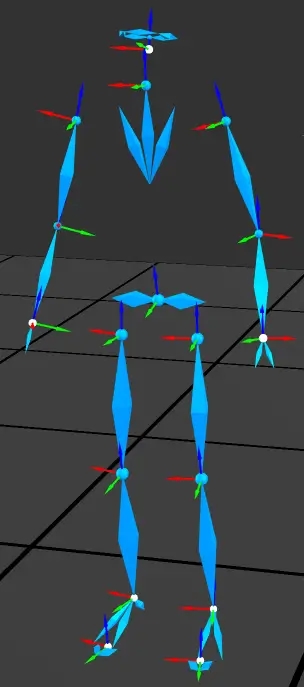Theia Model Description
There are currently three available models in Theia3D:
Consists of two kinematic chains: lower body (pelvis and legs) and upper body (torso, arms, and head).
No abdomen or neck segments.
Shoulder joints and head segment are allowed 6 degrees of freedom.
Consists of one, whole-body kinematic chain.
Abdomen and neck segments included.
Shoulder joints are allowed 6 degrees of freedom.
Head is allowed 3 degrees of freedom.
Consists of five kinematic chains: lower body (pelvis and legs), torso, left arm, right arm, and head.
No abdomen or neck segments.
Shoulder joints and head segment are allowed 6 degrees of freedom.
Pose
Model pose can be exported to .c3d, .fbx, and .json files.
The .c3d files contain the 4x4 pose matrices for each model segment and the local coordinates of the anatomical landmarks of the distal segments of the model (feet, hands, head). These files can be processed using Visual3D.
The .fbx files contain the hierarchical skeleton, pose, and bone meshes of the animation model. The first frame of the file contains the model in a “T-Pose”. The skeleton must be solved using the Full Body Model in order to save pose files in FBX format.
The .json files contain information about how the trial was processed (Theia3D version, model, preferences, etc.) and the 4x4 pose matrices for each body segment for every frame of the trial.

Was this helpful?

